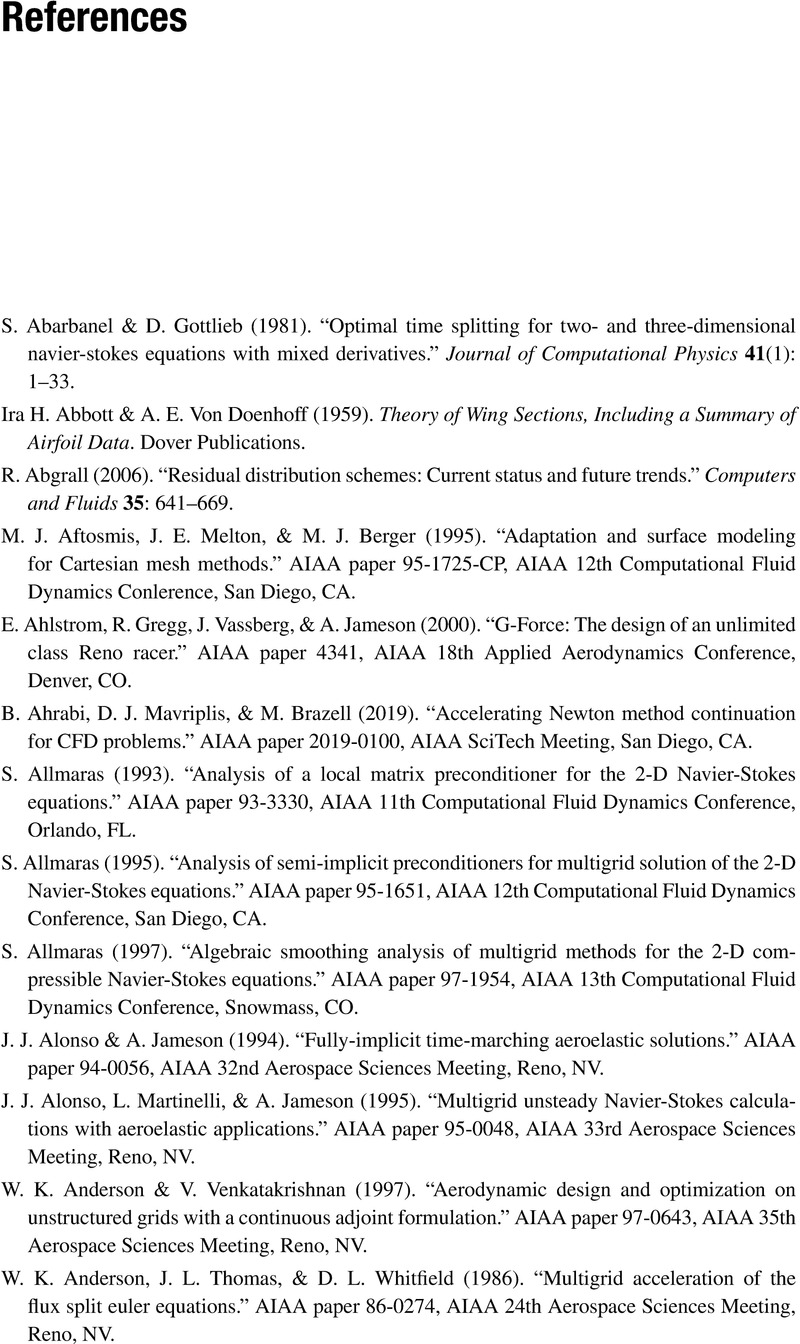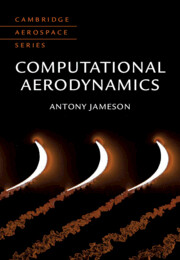Book contents
- Frontmatter
- Dedication
- Contents
- Preface
- Acknowledgments
- 1 Introduction and Background
- 2 Mathematical Models of Fluid Flow
- 3 Numerical Methods for the Solution of Partial Differential Equations
- 4 Fundamental Stability Theory
- 5 Shock Capturing Schemes I: Scalar Conservation Laws
- 6 Shock Capturing Schemes II: Systems of Equations and Gas Dynamics
- 7 Discretization Schemes for Flows in Complex Multi-dimensional Domains
- 8 The Calculation of Viscous flow
- 9 Overview of Time Integration Methods
- 10 Steady State Problems
- 11 Time-Accurate Methods for Unsteady Flow
- 12 Energy Stability for Nonlinear Problems
- 13 High order Methods for Structured Meshes
- 14 High Order Methods for Unstructured Meshes
- 15 Aerodynamic Shape Optimization
- Appendix A Vector and Function Spaces
- Appendix B Approximation Theory
- Appendix C Polynomial Interpolation, Differentiation, and Integration
- Appendix D Potential Flow Methods
- Appendix E Fundamental Stability Theory II
- Appendix F Turbulence Models
- References
- Index
- Plates
- References
References
Published online by Cambridge University Press: 12 August 2022
- Frontmatter
- Dedication
- Contents
- Preface
- Acknowledgments
- 1 Introduction and Background
- 2 Mathematical Models of Fluid Flow
- 3 Numerical Methods for the Solution of Partial Differential Equations
- 4 Fundamental Stability Theory
- 5 Shock Capturing Schemes I: Scalar Conservation Laws
- 6 Shock Capturing Schemes II: Systems of Equations and Gas Dynamics
- 7 Discretization Schemes for Flows in Complex Multi-dimensional Domains
- 8 The Calculation of Viscous flow
- 9 Overview of Time Integration Methods
- 10 Steady State Problems
- 11 Time-Accurate Methods for Unsteady Flow
- 12 Energy Stability for Nonlinear Problems
- 13 High order Methods for Structured Meshes
- 14 High Order Methods for Unstructured Meshes
- 15 Aerodynamic Shape Optimization
- Appendix A Vector and Function Spaces
- Appendix B Approximation Theory
- Appendix C Polynomial Interpolation, Differentiation, and Integration
- Appendix D Potential Flow Methods
- Appendix E Fundamental Stability Theory II
- Appendix F Turbulence Models
- References
- Index
- Plates
- References
Summary

- Type
- Chapter
- Information
- Computational Aerodynamics , pp. 589 - 606Publisher: Cambridge University PressPrint publication year: 2022



